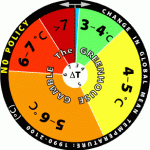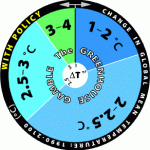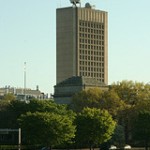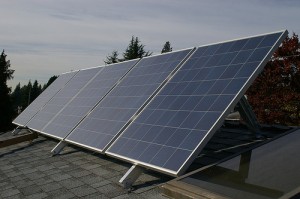 This week, the Cambridge Energy Alliance (CEA) launched an ambitious community outreach and education program to help Cambridge residents save money and reduce their carbon footprint. Eight dedicated climate heroes arrived in Cambridge Massachusetts after completing a 90 mile bike ride that began in Deerfield, MA. Cambridge is the riders’ the first stop on the Massachusetts Climate Summer tour to raise awareness about climate change by biking from community to community, promoting sustainability.
This week, the Cambridge Energy Alliance (CEA) launched an ambitious community outreach and education program to help Cambridge residents save money and reduce their carbon footprint. Eight dedicated climate heroes arrived in Cambridge Massachusetts after completing a 90 mile bike ride that began in Deerfield, MA. Cambridge is the riders’ the first stop on the Massachusetts Climate Summer tour to raise awareness about climate change by biking from community to community, promoting sustainability.
Over the next month, the climate heroes will bike throughout Cambridge, MA, speaking one-on-one with up to 3,000 residents about energy efficiency programs and services. The Climate Summer riders will visit Cambridge neighborhoods from the 17th of June to the 7th of July, offering a unique opportunity for residents to connect to information and resources to make their homes more comfortable and efficient.
During the door-to-door visits, residents will also learn about CEA’s services and programs. CEA helps residents access free and low-cost home energy audits, where an energy professional investigates opportunities to save energy and water for homeowners and tenants.
The CEA-sponsored door-to-door visits will have an immediate impact. Residents visited by the riders will receive a free energy efficient light bulb in exchange for an incandescent bulb from their home. The 5,000 light bulbs were donated by TCP, Inc. of Cleveland, Ohio. The light bulb swap will reduce carbon emissions by over 2.5 million pounds over the lives of the bulbs.









 Last week
Last week  The city of Berkeley, California has raced ahead in deploying solar capacity through an innovative approach that finances solar arrays for any home or business by including a surcharge to the owner’s property tax bill for 20 years to recoup the cost. If the home or business is sold, the assessment rolls over to the new owner. This innovative solution to the challenge of financing the high upfront costs of renewable energy projects has resulted in
The city of Berkeley, California has raced ahead in deploying solar capacity through an innovative approach that finances solar arrays for any home or business by including a surcharge to the owner’s property tax bill for 20 years to recoup the cost. If the home or business is sold, the assessment rolls over to the new owner. This innovative solution to the challenge of financing the high upfront costs of renewable energy projects has resulted in